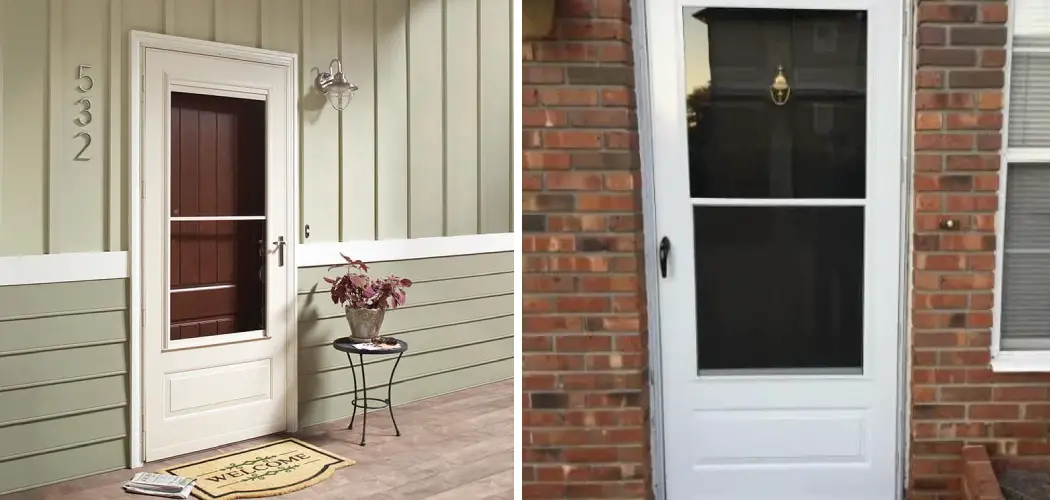Installing an Emco storm door can be a practical and cost-effective way to enhance the functionality and energy efficiency of your home’s entryway. A storm door acts as a barrier against the elements while allowing natural light and ventilation to flow into your living space.
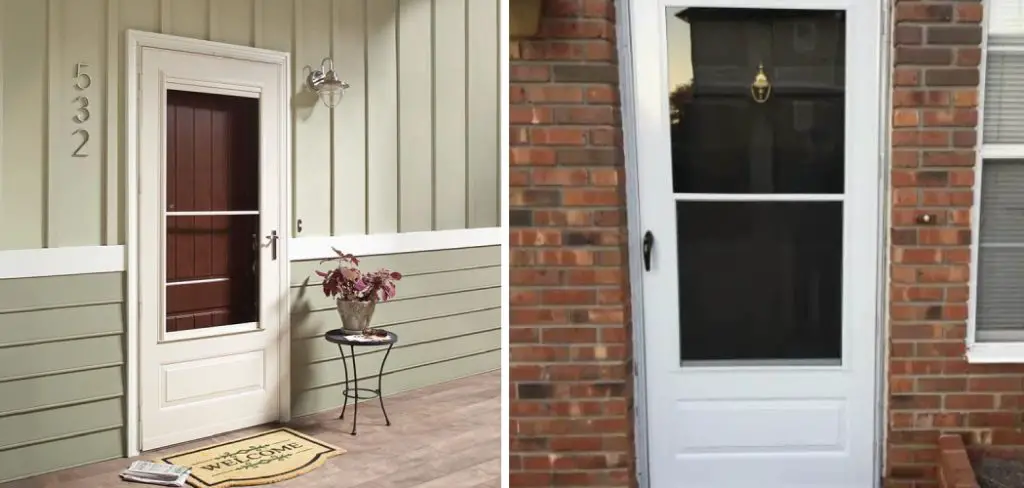
Whether you’re looking to replace an old door or add an extra layer of protection, learning how to install an Emco storm door is a straightforward process that can be accomplished with a few basic tools and a little patience.
In this article, we will guide you through the step-by-step how to install a emco storm door, covering everything from measuring and preparing the door opening to attaching the door frame and adjusting the door for a perfect fit.
We’ll also provide tips and insights to ensure a smooth installation experience. So, if you’re ready to improve your home’s curb appeal and create a more comfortable environment, let’s dive into the world of Emco storm door installation.
Why Is My Storm Door Not Closing When Door Is Closed?
One of the most common problems that occur with Emco storm doors is that they may not close when the door is closed. This issue can be caused by several different factors, including:
1. The frame of the storm door isn’t aligned properly with the main entry door’s frame. Storm doors are designed to fit snugly against the main entry door frame, so if they’re not aligned properly, it can prevent a proper seal and cause the storm door to not close all the way.
2. The hinges may be loose or misaligned. If the hinges on either side of your storm door are too loose or misaligned, then the door won’t be able to close properly. To fix this issue, you can tighten or replace any loose screws and make sure that the hinges are correctly aligned.
3. The closer on the storm door may need adjustment or replacement. Many Emco storm doors have a spring-loaded closer that holds the door in place when it’s closed. If this is not functioning properly, it can prevent the door from closing all the way. To fix this issue, you may need to adjust or replace the closer.
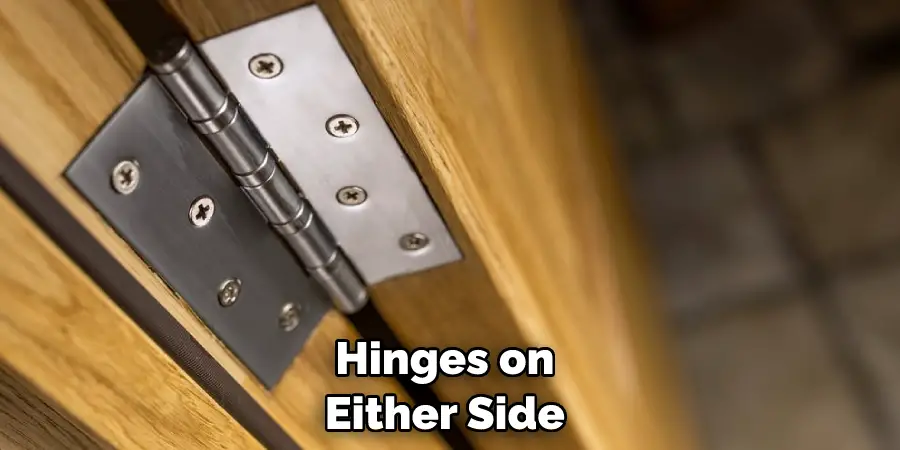
If your Emco storm door isn’t closing when it should, troubleshoot these common issues to determine which one is causing the problem and take the appropriate steps to fix it. Once you’ve addressed the issue, your storm door should close correctly and provide protection from the elements like it was designed to do!
Should Storm Doors Be Air Tight?
It’s important to remember that storm doors don’t need to be airtight. While they can help reduce drafts, their main purpose is to provide protection from the elements. Storm doors are designed with overlapping edges and a sealant around the perimeter of the door in order to keep out dust and other debris while allowing air circulation.
If your storm door has become too drafty, you may need to adjust the latch and strike plates or replace the weatherstripping. Some models also come with adjustable thresholds that can be raised or lowered to seal off gaps beneath the door. With proper installation and regular maintenance, your storm door should provide effective protection from wind, rain, and snow while allowing outside air to circulate freely.
It’s important to remember that storm doors should not be sealed shut since this may cause the door to bow or warp due to pressure build-up. The same applies if you decide to install a window within the storm door – be sure to leave a gap between the edge of the glass and the edges of the frame so that air can circulate. Properly installed, a storm door will provide you with years of protection against the elements while also allowing you to enjoy natural ventilation and light.
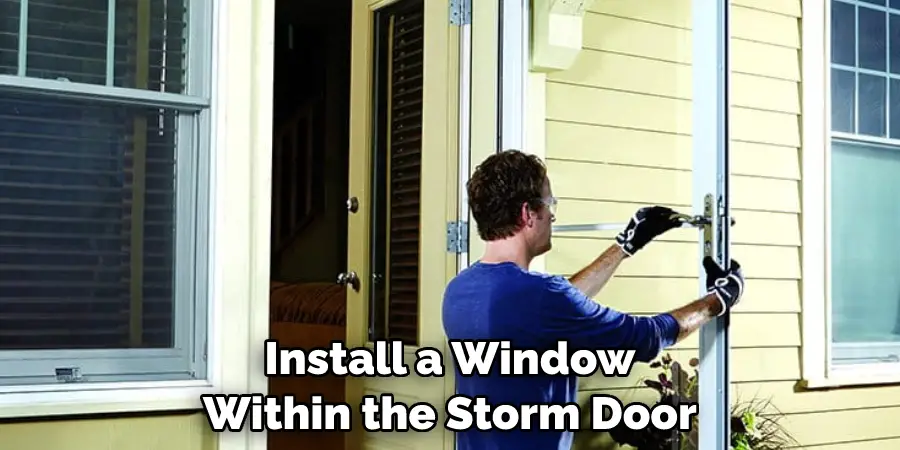
10 Methods How to Install a Emco Storm Door
1. Gather Tools and Materials
Before you begin the installation process, it’s essential to have all the necessary tools and materials on hand. You will need a measuring tape, level, drill, drill bits, screwdriver, hammer, and safety glasses.
You’ll also need the storm door kit, which typically includes the door frame, glass panel, door handle, and hardware. However, you may need to purchase additional materials depending on the type of door and your specific installation needs.
2. Measure the Door Opening
Measure the width and height of the door opening to ensure that you select the correct size storm door. Make sure to measure from the inside of the door jamb and top to bottom of the door opening. It’s essential to have accurate measurements to ensure a proper fit.
While measuring, it’s smart to check that the door opening is plumb and square. To do this, measure the diagonals from corner to corner of the door opening. If they’re not equal, it is necessary to adjust the frame before installation. Try to make sure that the door opening is at least 1/2″ wider and 1/4″ taller than the storm door.
3. Prepare the Door Opening
Remove any old hardware from the door opening and clean the area. Make sure the door opening is level and plumb. It’s crucial to have a level opening to ensure a perfect fit for the storm door. Try to adjust any discrepancies with shims.
While the storm door is pre-hung, small adjustments can be made to make sure it fits perfectly. To temporarily hold the storm door in place, use screws, nails or double-sided tape. However, the door should not be permanently secured until all adjustments have been made.
4. Attach the Hinge Side Z-Bar
The hinge side Z-bar is the first piece that you’ll attach to the door frame. Use a level to ensure it’s plumb, then drill holes and secure it to the door frame with screws. Make sure the Z-bar is flush with the door jamb.
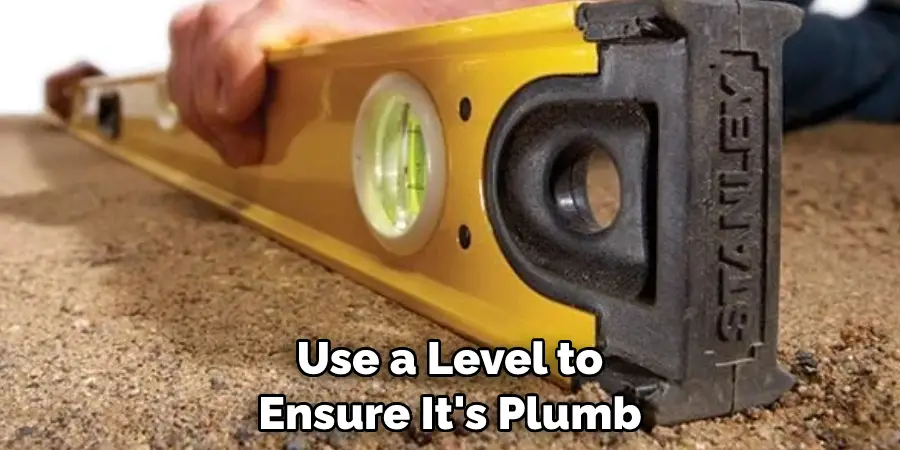
While doing so, make sure to leave a gap of 1/4 inch between the top edge of the Z-bar and the door header. While attaching the Z-bar, leave a gap of 1/4 inch between the bottom edge of the Z-bar and the door sill. Though it’s not necessary, you may choose to caulk the gap between the Z-bar and door frame.
5. Attach the Top Z-Bar
The top Z-bar attaches to the door frame and provides support for the storm door. Use a level to ensure it’s plumb, then drill holes and secure it to the door frame with screws. Make sure the Z-bar is flush with the door jamb.
Once the top Z-bar is in place, you can attach the hinges and hook the latch. Although many storm doors come with pre-hung hinges, it is recommended to use the manufacturer’s ones to ensure proper fit. However, you can use standard hinges instead of the pre-hung ones.
6. Attach the Strike Side Z-Bar
The strike side Z-bar is the final piece that you’ll attach to the door frame. Use a level to ensure it’s plumb, then drill holes and secure it to the door frame with screws. Make sure the Z-bar is flush with the door jamb. To secure the latch side of the Z-bar, drive screws through the pre-drilled holes in the door.
Though you may still need to make adjustments, the door should now be able to operate correctly. While this may seem like a lot of work, the process is a relatively straightforward one and should only take an hour or two to complete. With your new Emco storm door securely in place, you’ll be able to enjoy improved energy efficiency and weather protection all year.
7. Install the Door Handle and Lockset
Follow the manufacturer’s instructions to install the door handle and lockset on the storm door. Make sure the handle and lockset are secure and function correctly. However, if you are not comfortable with the installation process it is recommended that you contact a professional locksmith.
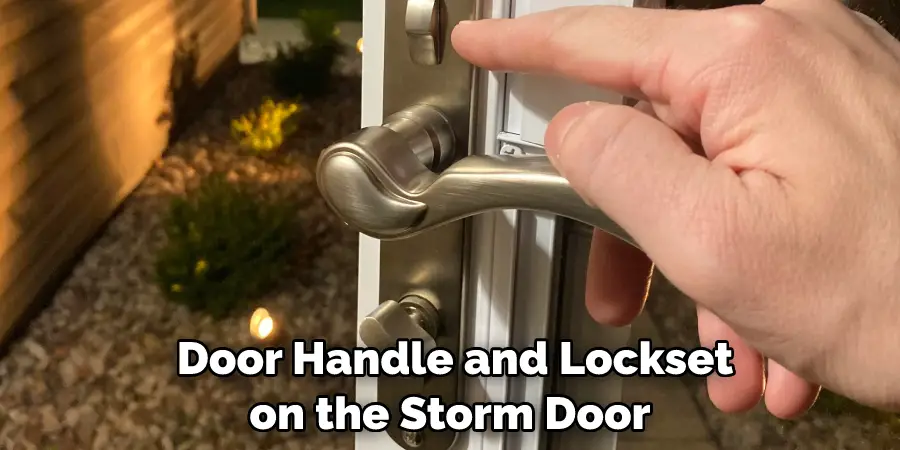
Additionally, you may need to cut the metal door frame around the handle or lockset in order for them to fit correctly. Once you are done installing the handle and lockset, your storm door is ready for use. Make surer to test the door latch and lockset once you are done.
8. Install the Glass Panel
Insert the glass panel into the door frame and secure it with the provided clips. Make sure the glass panel is centered and level. While pushing the panel in place, adjust the clips to fit tightly around the glass and hold it in place.
To ensure a secure fit, insert the screws and tighten them with a screwdriver. If the glass panel is fogging up, you may need to adjust the weather stripping. Although this process may seem tedious, it is important to make sure the glass panel is secure and weatherproof.
9. Attach the Door to the Z-Bars
Hang the storm door on the Z-bars by aligning the hinges with the hinge side Z-bar. Use screws to secure the hinges to the Z-bar. Make sure the door is level and operates smoothly.
While the door is open, use a level to make sure it’s properly aligned.
To adjust the door, loosen and adjust the hinge screws. Tighten them again once you’ve achieved your desired alignment. However, you should try to adjust the Z-bars if possible. When the door is in place, secure the hinges with screws.
10. Adjust the Door for a Proper Fit
Adjust the door for a proper fit by using the provided screw slots on the hinge side Z-bar. Loosen the screws and adjust the door up or down to achieve a perfect fit. Tighten the screws to secure the door in place. Next, close the door and check for proper alignment with a level.
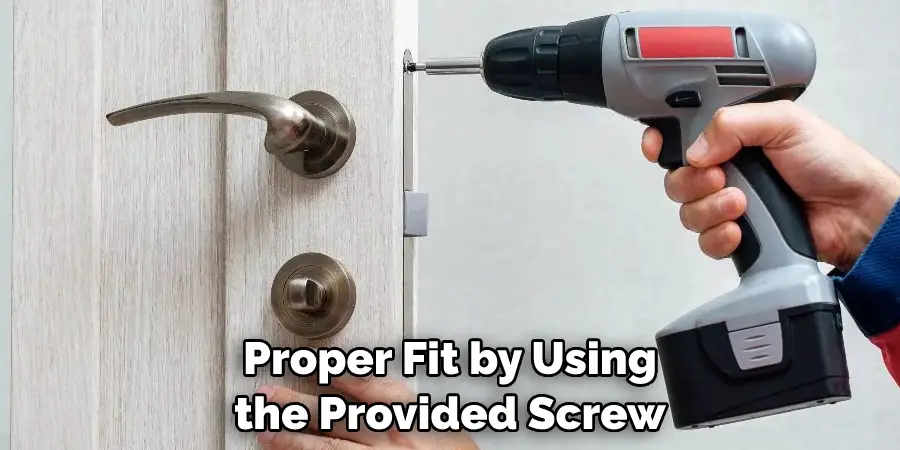
If necessary, adjust the door strike plate on the jamb side of the frame and the closer bracket on the hinge side of the frame. Additionally, adjust the door sweep and weather stripping on both sides for a tight fit.
Some Common Mistakes When Installing a Emco Storm Door
1. Not Properly Measuring the Opening:
Before you purchase a storm door, make sure to measure the opening accurately to ensure that your Emco storm door fits properly. If the size is not correct, you may have difficulty installing and adjusting it correctly.
2. Not Installing the Storm Door Flush with the Exterior Wall:
Be sure to install the door flush against the exterior wall, ensuring that there are no gaps between it and the building’s surface. This will help keep weather away from the threshold and hinges, which could cause the storm door to malfunction over time.
3. Not Securing Enough Fasteners:
In order for your Emco storm door to remain secure and remain in place, you must ensure that there are enough fasteners securing it to your building’s frame. Without enough fasteners, the door may become loose over time and potentially cause damage to your wall.
4. Not Leveling the Door:
It is also important to make sure that you level the storm door during installation. If it is not properly leveled, it could be difficult to open or close, resulting in a malfunction of some kind. You can do this by adjusting the door’s hinges or adding shims to even it out.
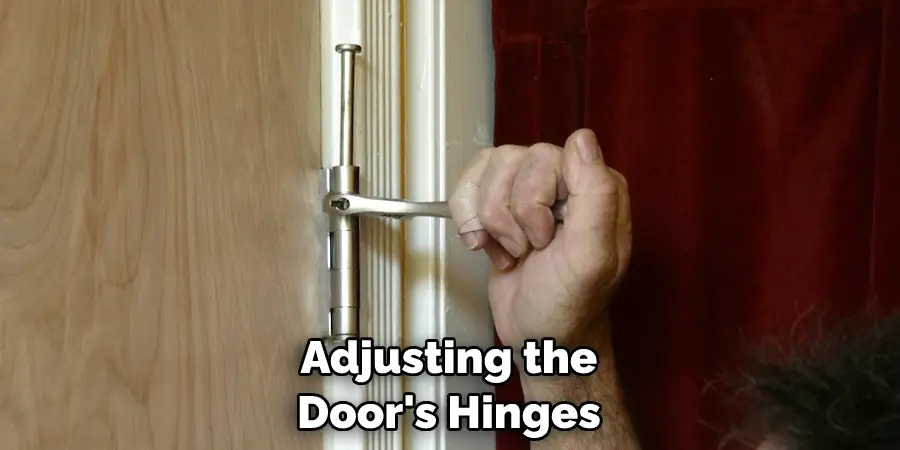
Conclusion
When it comes to installing an Emco storm door, there are a few things to keep in mind. Make sure to take proper safety precautions, measure everything twice (or even three times!) to ensure accuracy, and have someone else available to help if needed.
With patience and a few well-measured steps, you should be able to have the job done in no time. While nothing ever goes perfectly according to plan – that’s part of the fun of DIY projects – you can still strive for success and satisfaction!
With the right tools and accessories, your storm door will look good and stay strong for years to come. There’s nothing quite like the feeling of accomplishment when you see the project through from start to finish- so don’t underestimate yourself or hesitate. Get out there and get started on How to Install a Emco Storm Door project today!

